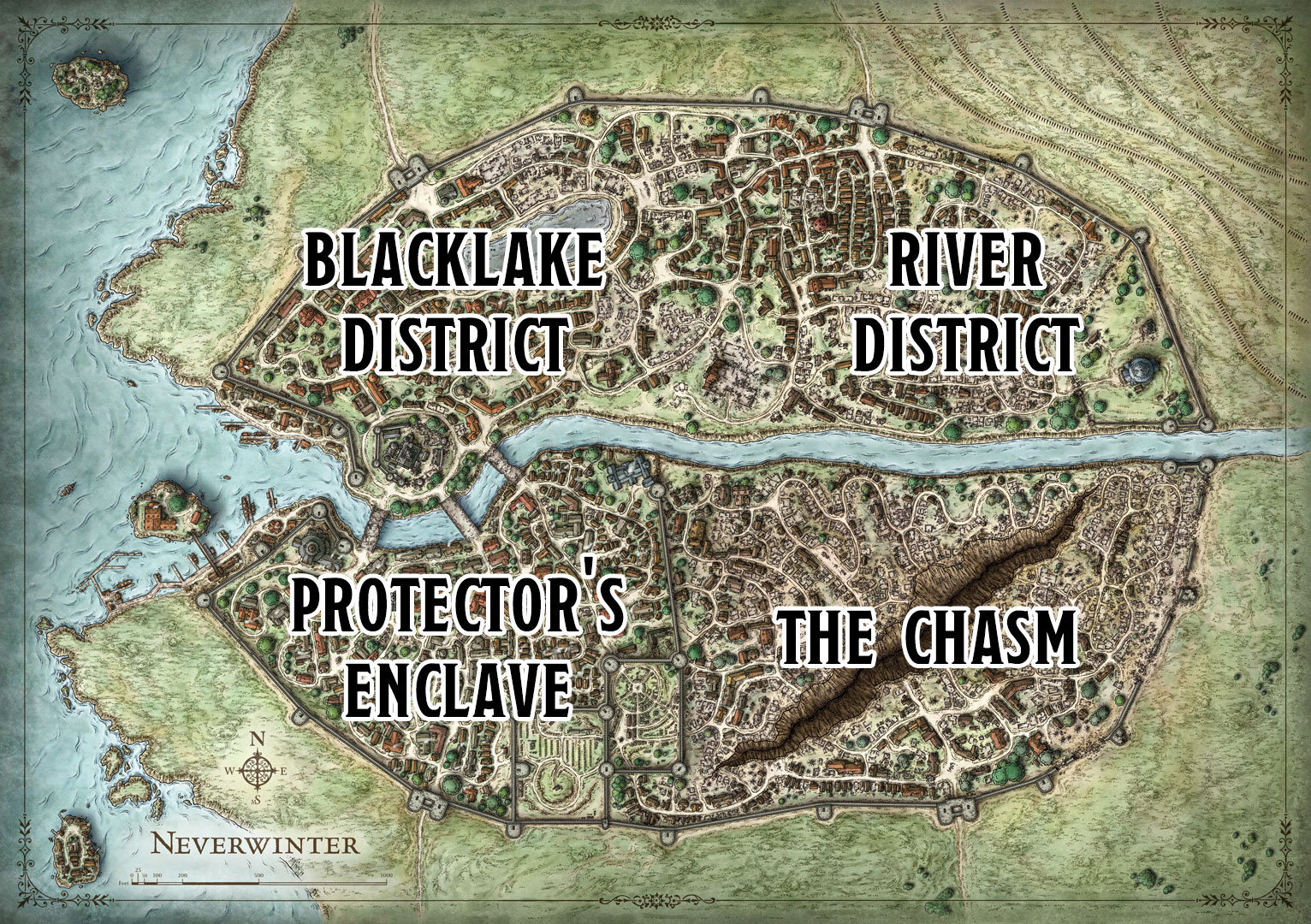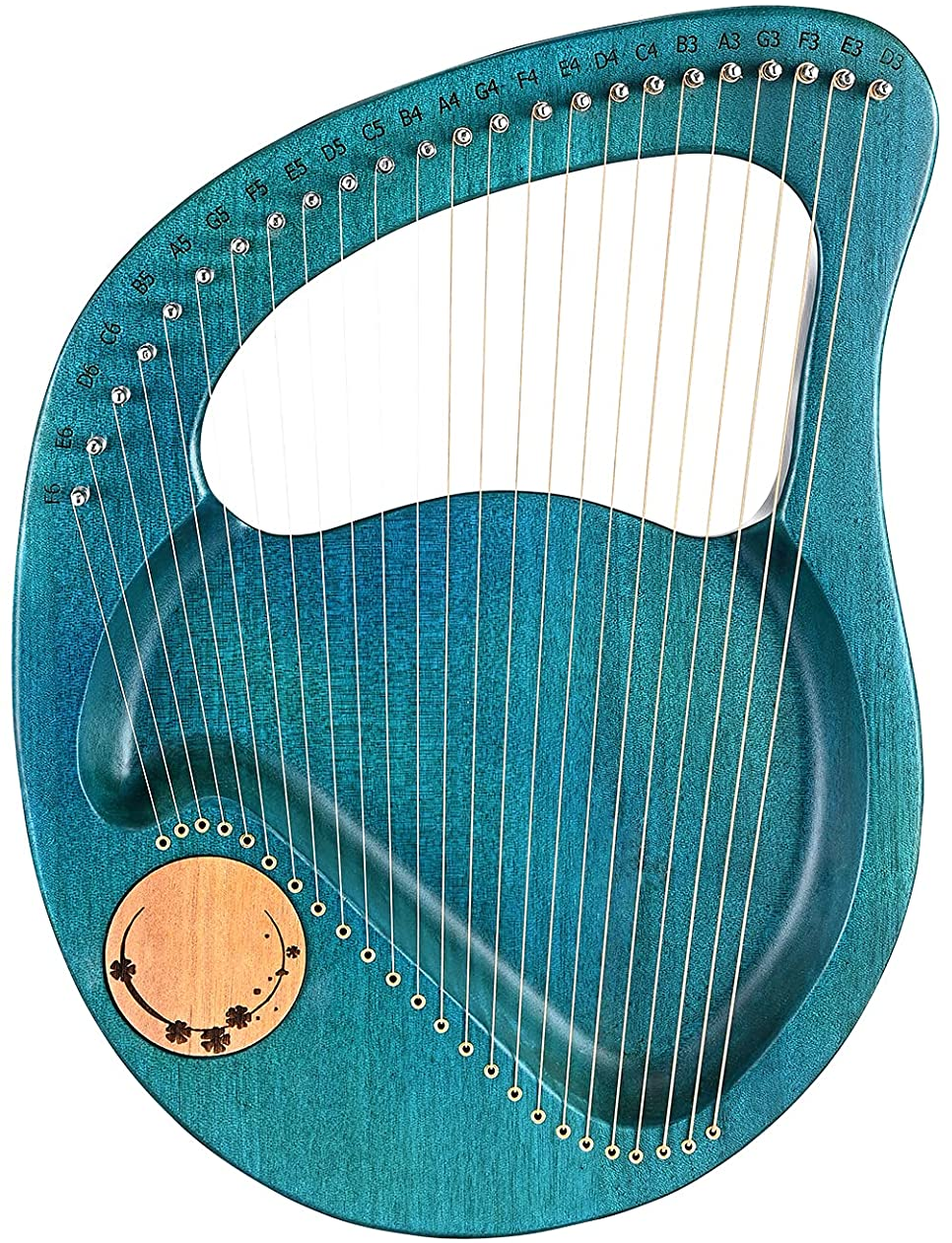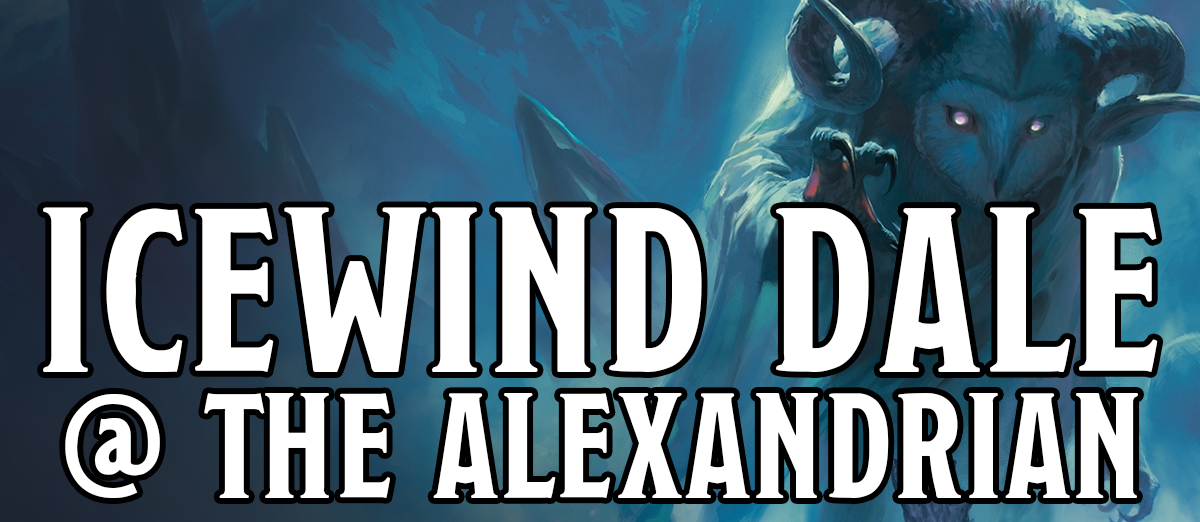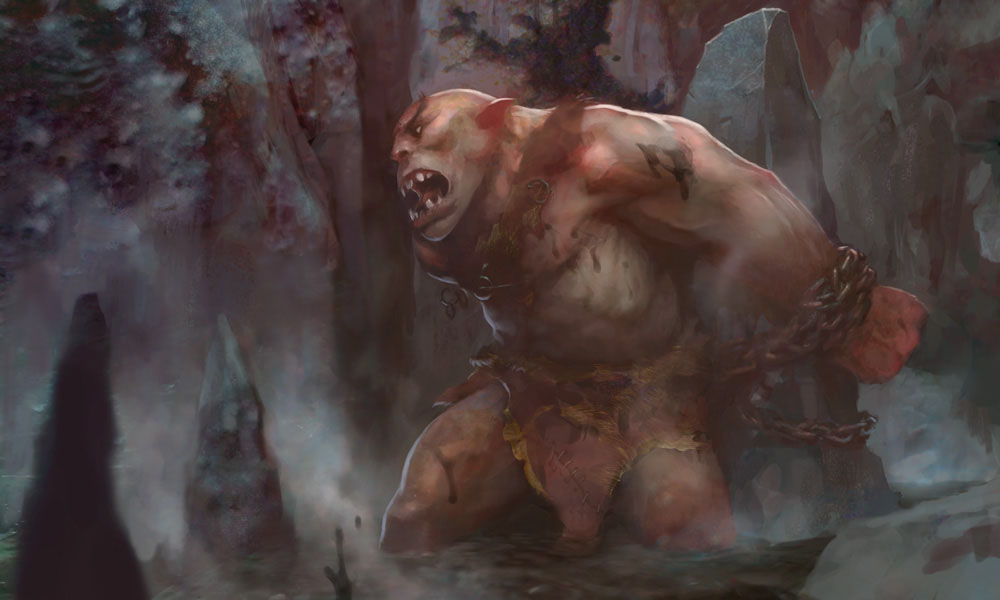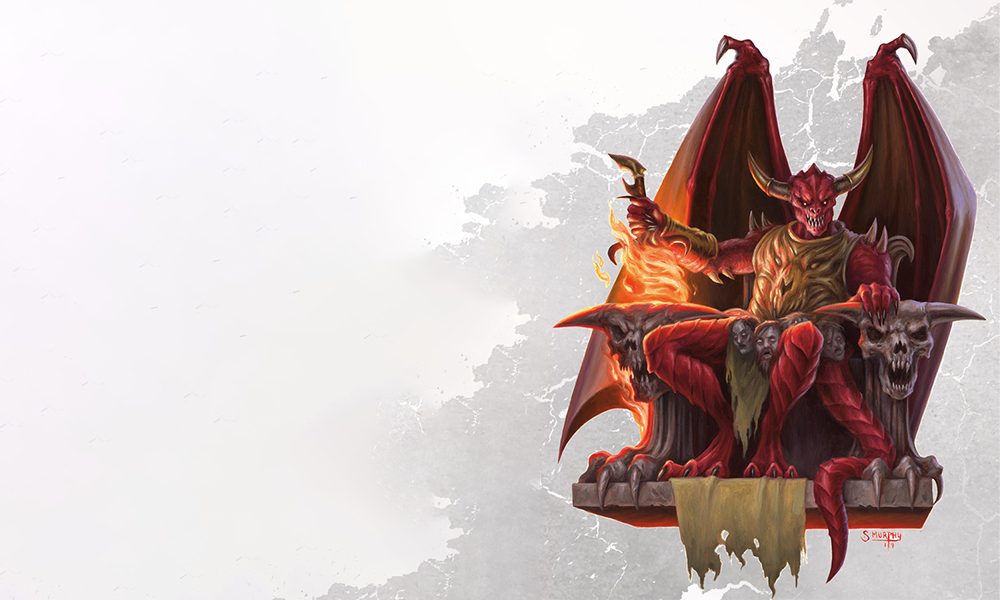
Go to Table of Contents
As the PCs are drawn deeper into the feuding politics of the local Avernian wastes, they will slowly become aware that the seemingly titanic powers which rule over the entire plane are similarly fractious and riven with feuds.
As the PCs become more powerful, the eyes of these powerful factions will be drawn to them. Some may view them as threats. Others will see them as opportunities.
The question facing the PCs will be whether or not they can turn this attention to their advantage, most likely by turning the factions against each other, finding a way to frame what they want so that it’s also to the advantage of a potential ally, or both. Because it’s very likely that they will need to gain powerful help if they are going to succeed in their quest to save Elturel. There are several key goals in the Avernian Quest which will, at the very least, become more easier to achieve with a heavy-hitter on their side:
- Killing Zariel cancels all of her infernal contracts, but the PCs will almost certainly not be able to kill her by themselves. Fortunately, Zariel has created many enemies during her reign in Hell, including numerous devils and demons.
- To sever the chains holding Elturel will require the aid of a powerhouse ally (a redeemed Zariel, released Gargauth, Bel, or Tiamat).
- The PCs might also wish to free the planetar trapped within the Companion. Bel, Tiamat, and Gargauth can all help guide the PCs towards achieving this.
- Finally, it may be necessary to open an interplanar gate through which the people of Elturel can be evacuated. Bel, Tiamat, or the Archmagi of Thraxai in the Purple City could create such gate.
And, of course, the players are quite likely to concoct their own schemes and goals, any one of which could benefit greatly from their alliances with the major factions of Avernus.
The price of such powerful favors, though, should be high. This is Hell, after all, and the opening offer will most likely be their mortal souls. The PCs will have to figure out how to make a compelling offer that they can live (and die) with.
ZARIEL
As the Archduchess, Zariel is ultimately the hub around which all the intrigues of Avernus turn. She’s the spider at the center of the web; the queen at the core of the court intrigue. Thematically, this is great, because the entire Descent Into Avernus campaign also turns around Zariel.
What Zariel Wants: The destruction of the Abyss and the Sword of Zariel.
Unless the PCs give up on the idea of saving Elturel, they’re unlikely to form a relationship with Zariel. See Part 6B for details on bargaining with Zariel, but the only thing she’s likely to give up Elturel for is her Sword. (A redeemed Zariel, of course, changes everything.)
What Zariel Offers: Zariel controls the fate of Elturel (through the Bellandi pact, the chains, and the Companion). Of course, she also has the legions of Hell at her command, so there’s a quite a bit she’s capable of doing if it can somehow be made worth her while.
BEL
Bel was, of course, the former Archduke of Avernus. Here’s a quick summary of Bel’s history for easy reference.
- Rose from a lowly lemure to engineer a coup which overthrew Gargauth (then the Archduke of Hell)
- After her fall, Zariel served as one of the Dark Eight, Bel’s generals. She was freqeuently rebellious, ignoring or disobeying Bel’s commands. (But she was also successful, so he tolerated it.)
- In the 13th century DR, Bel was targeted for “assassination” by Glasya. Bel fell into a magical coma and suspicion fell on Dispater, the Archduke of Dis (exactly as Glasya had intended). This was the beginning of the Reckoning (see Part 6D). Bel remained in his coma for most of the Reckoning, emerging only near the end of the conflict. Zariel was imprisoned by Tiamat at the end of the Reckoning.
- In the 14th century DR, Gargauth attempted to invade Hell with the Dark Gods. After smashing the invasion, Bel captured Gargauth and presented him as a captive to Asmodeus. Asmodeus had Gargauth bound into the Shield of the Hidden Lord.
- In the 15th century DR, a rift filled with baatorians opened in Avernus, triggering the Rift War (also Part 6D). Bel blew it. The baatorians overwhelmed the Avernian frontiers, allowing demonic armies to also freely invade Avernus. Glasya arranged for Zariel to be freed from Tiamat’s prison and she rallied the legions, defeated the baatorians, and drove back the demons. Asmodeus demoted Bel back to the ranks of the Dark Eight and made Zariel the new Archduchess.
- Bel has served “loyally” ever since.
What Bel Wants: To be restored as the Archduke of Avernus.
He’s unlikely to think that this will actually happen immediately as a result of the PCs’ actions, but if he sees a chance to discredit Zariel (losing Elturel would be a major embarrassment and setback for her) or simply distract and inconvenience her, he’ll take advantage of it.
Bel knows that Zariel deeply desires the Sword of Zariel, and so he would be interested in acquiring it as a future bargaining chip. If he becomes aware of its true properties (i.e., the spark of goodness inside it), he will become even more intrigued. He probably won’t take the idea of redemption seriously (such thoughts are anathema to the very nature of a devil), but he’s likely to perceive it as a potential weakness or Achilles’ heel for Zariel.
What Bel Offers:
- Deep knowledge of the metaphysics around Elturel’s doom. Bel controlled the Dock of Fallen Cities and was Gargauth’s first master (see Part 3B). His forge also oversaw the construction of the Solar Insidiator (aka the Companion) and knows that there are adamantine rods which can be used to open it which were lost when the flying fortress carrying them crashed.
- Bel has the power to personally sever the chains holding Elturel. (But knows this is only useful if the Bellandi pact has been undone.)
- He can create a gate back to the Material Plane.
- While he could join an open fight against Zariel (and prove invaluable in defeating her), he’s exceedingly unlikely to do so. Bel has an almost infinite reserve of patience and the ability to scheme in terms of centuries at a temporal scale almost beyond mortal comprehension. What he will do is obliquely suggest potential allies like Crokek’toeck and Kostchtchie.
TIAMAT
Tiamat is the Queen of Evil Dragons.
- She once ruled Avernus, but the evil dragons born of the vast spawning pits she created proved ineffective in the Blood War and Asmodeus deposed her. (This epoch of Avernus would have predated Gargauth’s rule by eons.)
- Tiamat remains imprisoned in Avernus; like devils, she is unable to journey to the Material Plane unless summoned. (Mordenkainen’s Tome of Foes shares that some mortal scholars believe that Tiamat was imprisoned in Avernus due to a curse inflicted at the end of the dragon-giant wars. It’s possible that Tiamat came to Avernus hoping to raise draconic legions to aid her followers during the war; or perhaps she made a bargain with Asmodeus. Or this may be entirely mistaken and Tiamat’s involvement in the dragon-giant wars were actually those of an avatar, with her “curse” just being the banishment or destruction of her avatar.)
- During the Reckoning, Zariel and Tiamat were allied in the Siege of Dis. Towards the end of the Reckoning, Tiamat turned on Zariel and imprisoned her in her citadel. Zariel was eventually freed by Glasya during the events of the Rift War, after which Zariel became the Archduchess of Avernus.
- Zariel has forbidden Tiamat from leaving her citadel, which guards the entrance from Avernus to Dis (Hex C1).
What Tiamat Wants: To be free of Avernus.
- Tiamat herself has no interest in ruling Avernus (and being Asmodeus’ pawn). But a viable scheme that installs someone loyal to her (e.g. Arkhan) on the throne of Avernus is something she’d be interested in.
- There are actually a significant number of rituals which can free Tiamat (in either the short or long term). Most of these require one or more powerful artifacts. If the PCs can get their hands on one of these, Tiamat would readily bargain for it. (If your players haven’t done Tyranny of Dragons yet, for example, you might have them get one of the Dragon Masks, which Arkhan will see gets passed along to culists on the Material Plane, triggering the events of that campaign. Or, if they have played the campaign or you’re more of a stickler for strict continuity, perhaps they recover one of the Dragon Masks from wherever it was left at the end of Tyranny. Maybe they even need to go on a side quest to obtain it from one of their former PCs.)
What Tiamat Offers: Most or all of the PCs’ negotiations with Tiamat will likely happen through her emissary Arkhan.
- If the PCs have both copies of Bellandi’s pact, Tiamat’s fire could destroy them.
- Tiamat can sever the chains of Elturel.
- Most abishai are servants of Tiamat, giving her access to vast numbers of soldiers independent from the blood legions. (See p. 149 of Descent Into Avernus.)
GARGAUTH
Detailed notes for Gargauth are presented in Addendum: Playing Gargauth. Gargauth is different from the other factions presented here because he doesn’t really have an organization or base of power. However, his place in the chain of succession for the archdukes of Avernus (Tiamat through an unknown number of intermediaries to Gargauth to Bel to Zariel) is significant, and his relationships with the other factions may be both significant and insightful for the PCs. If freed from the Shield of the Hidden Lord, Gargauth is also a powerful entity in his own right who could help the PCs achieve many of their goals.
(Gargauth is also notable because the PCs might not bring him to Avernus at all, in which case he’ll play no role in this phase of the campaign. Which is just fine.)
What Gargauth Wants: Gargauth’s primary goal is being freed from the Shield of the Hidden Lord. He might accomplish that by convincing the PCs to help him; or he might pursue it by betraying them and continuing the pursuit of his bond to sacrifice cities to the Blood War.
Being restored as Archduke? Interesting, but he knows there’s no clear path to making that happen. (Although if Zariel were removed and he was in just the right place at the right time…?)
Becoming one of the Dark Eight? Also interesting, and perhaps far more plausible.
What Gargauth Offers: As noted, a freed Gargauth can help the PCs in a number of ways (killing Zariel, severing the chains holding Elturel, etc.). The trick is that this will only happen if he’s properly bound or motivated before being freed. If the PCs don’t dot the i’s and cross the t’s of any agreement with Gargauth before freeing him, he’ll just thank them sincerely, cackle at their naivete, and then disappear into the multiverse.
THE PURPLE CITY
Baron Tolmanen, Agamemnova Hex, and Lux Arakxis of the Purple City (Hex F2) exist as something of a midway point between the warlords of the Avernian plains and the powerful factions that rule Avernus: They are known to deal with both, their level of power and influence lies somewhere between them, and their ambitions would seek to propel them into the latter.
If Bel, Gargauth, and Tiamat are Those Who Would Be King, then these are Those Who Would Be Those Who Would Be King.
The Purple City can thus be a natural transition point in your campaign. When the PCs ask their warlord buddies about contacting Bel, they may be referred to the potentates of the Purple City to make the introductions. Conversely, if Tiamat becomes curious about who these new sword hunters are who have been stirring up trouble and are rumored to be traveling with Zariel’s celestial mount, then perhaps Arkhan will call in some old favors with Lux Arakxis to investigate the PCs (or kidap Lulu!).
What They Want: Power and wealth. Each of the three factions of the Purple City also seek advantage against the other two.
What They Offer: If you know the right people, the Purple City can be both a safe haven and a place to resupply in the unforgiving wilds of Avernus.
- Baron Tolmanen is a veteran of the blood legions and maintains contacts with many of his former comrades. (Perhaps some serve on Zariel’s flying fortress? Or in Bel’s honor guard?)
- The Archmagi of Thraxai are well-versed in infernal and arcane lore. They might even provide an alternative to Mad Maggie for recovering Lulu’s memories. (Perhaps they know how to build a dream machine? Or could similarly repair Maggie’s if it was stolen from her?)
- The March are infiltration specialists well-versed in the security systems of Hell. They also have a heartstone, one of the dream machine components.
Homework: If you’re interested in further expanding the infernal politics of the campaign, consider developing one or more of the Dark Eight. Zariel, of course, rose from their ranks, and they are constantly scheming and vying with each other for power and prestige.
Go to Part 7F-B: Demonic Powers

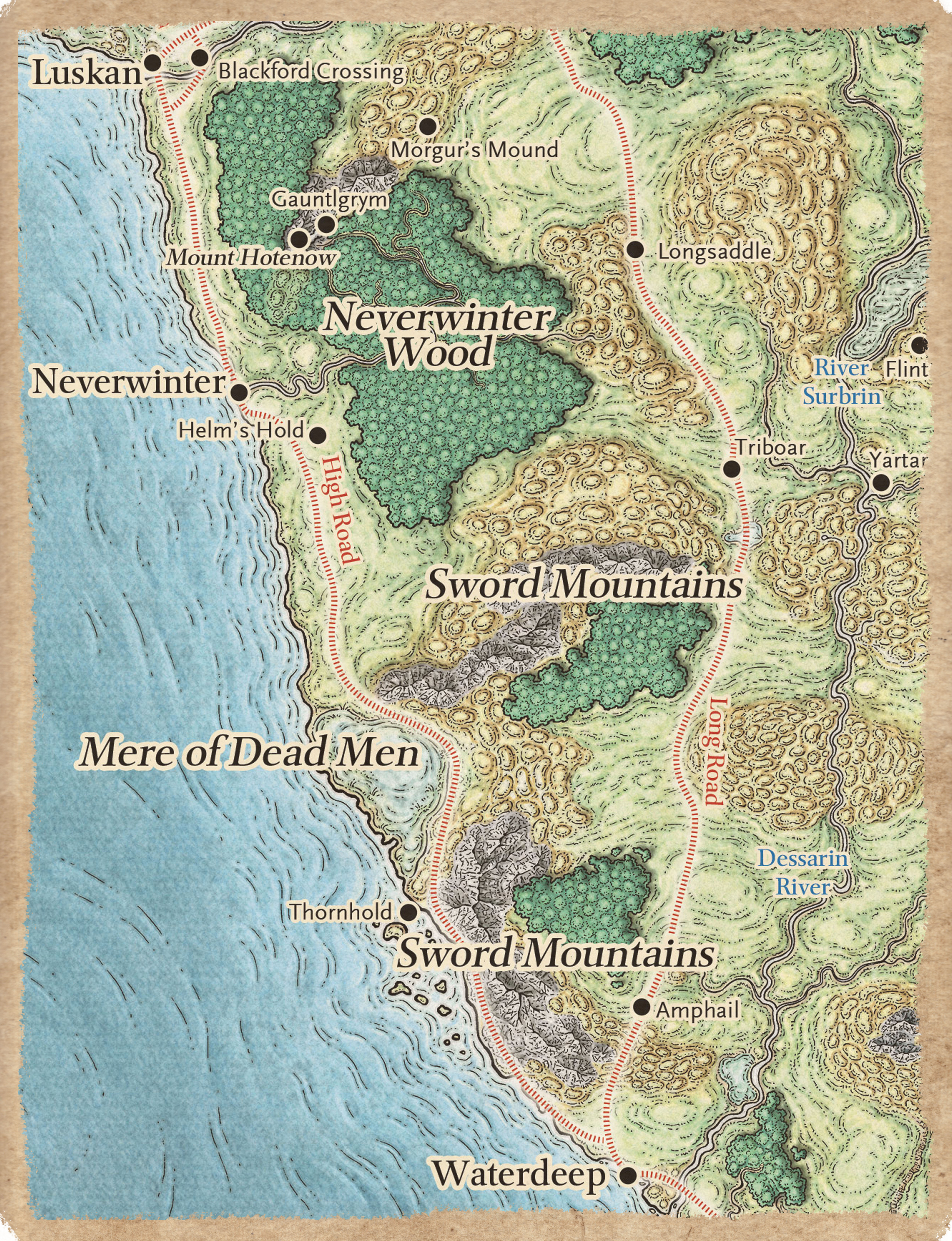 realms scattered throughout the forest. This notably included the ruins of Sharandar, the treetop capital of the elven empire of Iliyanbruen which once ruled much of the North. Iliyanbruen was formed in -1100 DR when the even larger elven empire of Illefarn dissolved. It stood for more than a millennium before collapsing in 177 DR. As their empire fell, the elves of Iliyanbruen sought to preserve the beauties of Sharandar within the echoes of the Feywild; like some precious jewel preserved within amber. The eruption left in its wake a multitude of echoes of an echo that had lived in a ream.
realms scattered throughout the forest. This notably included the ruins of Sharandar, the treetop capital of the elven empire of Iliyanbruen which once ruled much of the North. Iliyanbruen was formed in -1100 DR when the even larger elven empire of Illefarn dissolved. It stood for more than a millennium before collapsing in 177 DR. As their empire fell, the elves of Iliyanbruen sought to preserve the beauties of Sharandar within the echoes of the Feywild; like some precious jewel preserved within amber. The eruption left in its wake a multitude of echoes of an echo that had lived in a ream.

